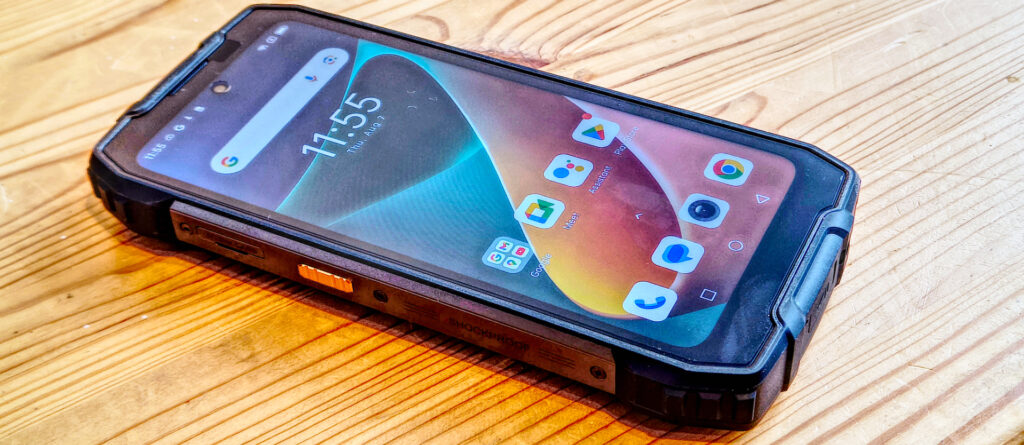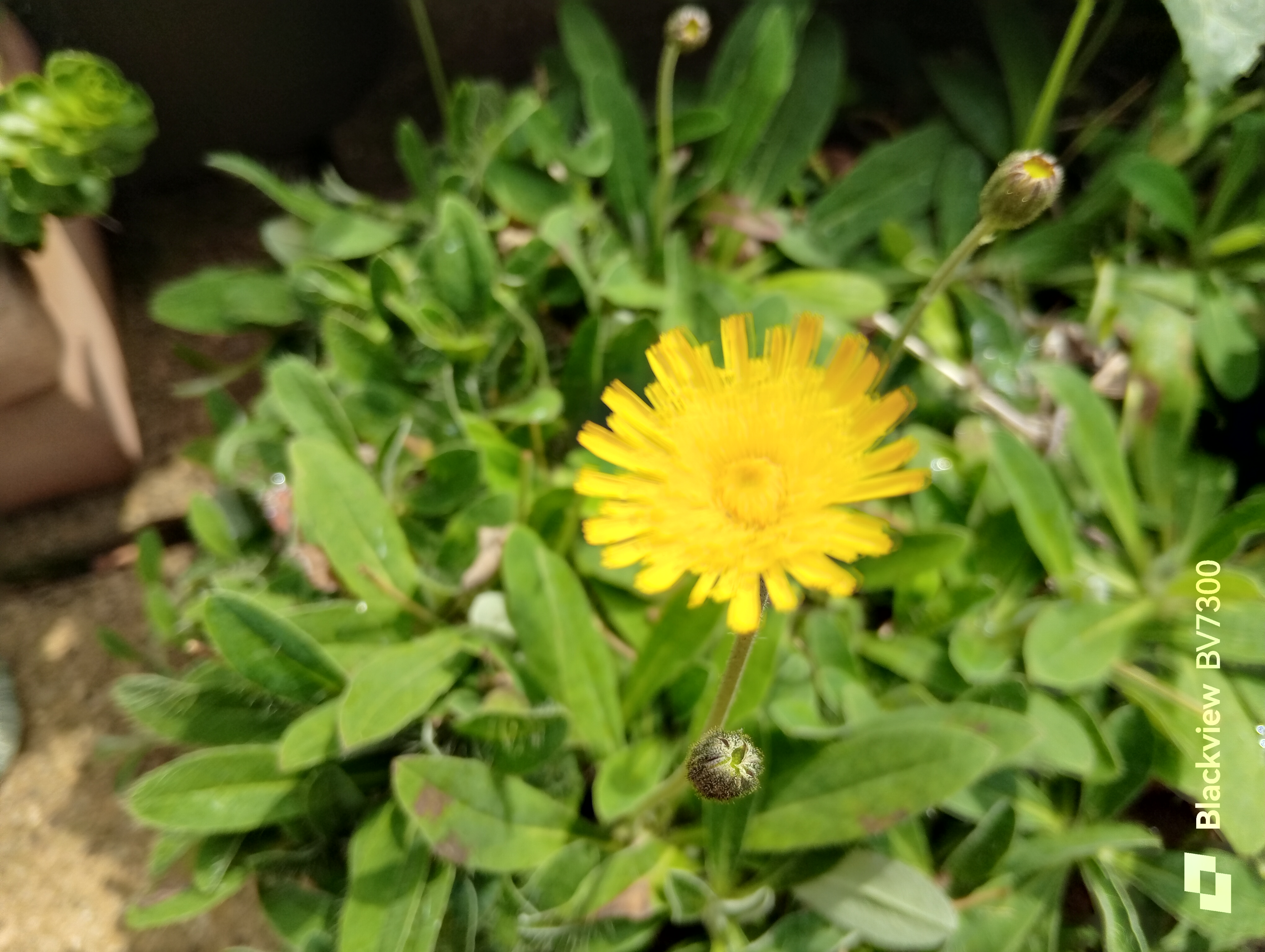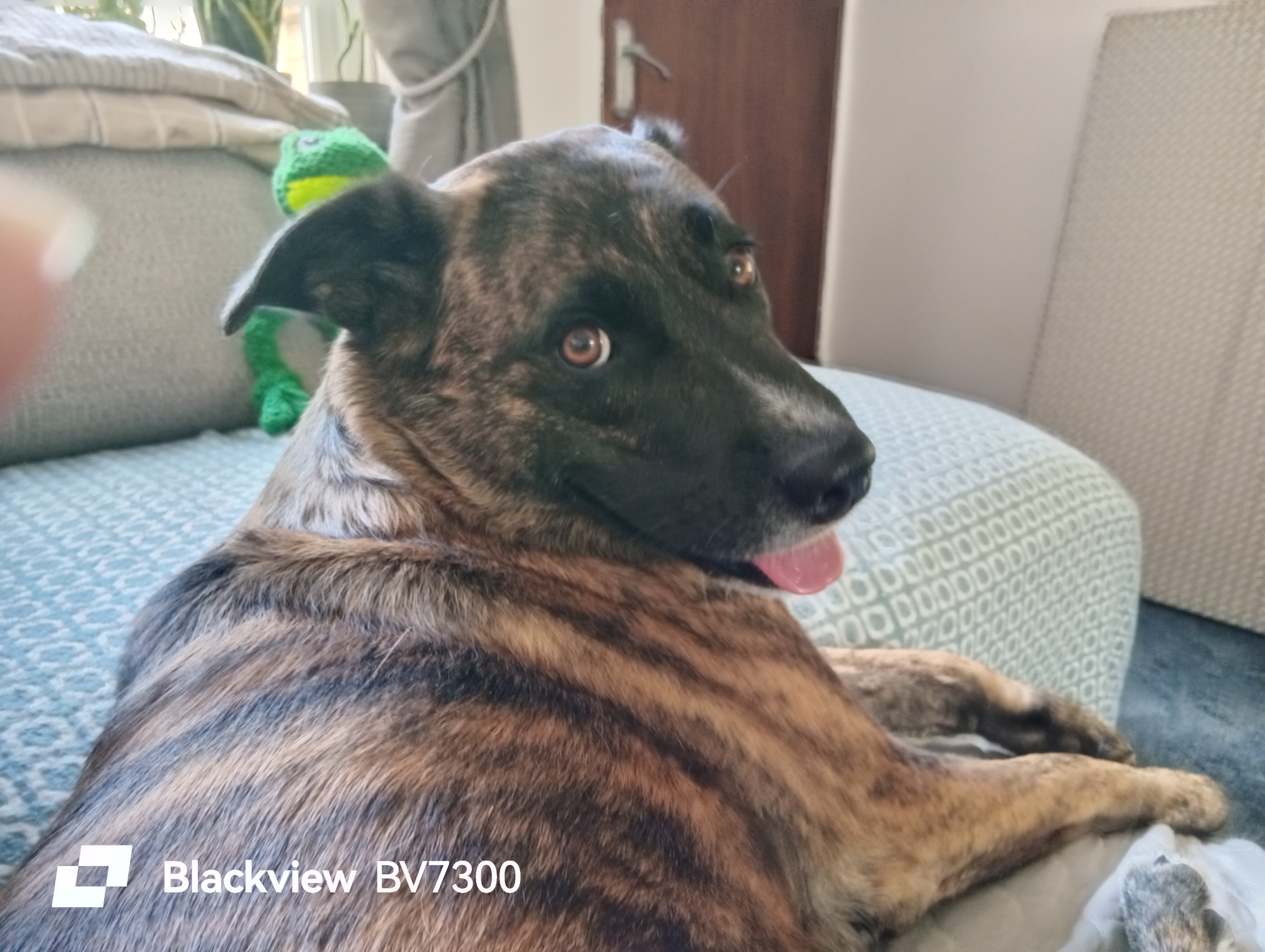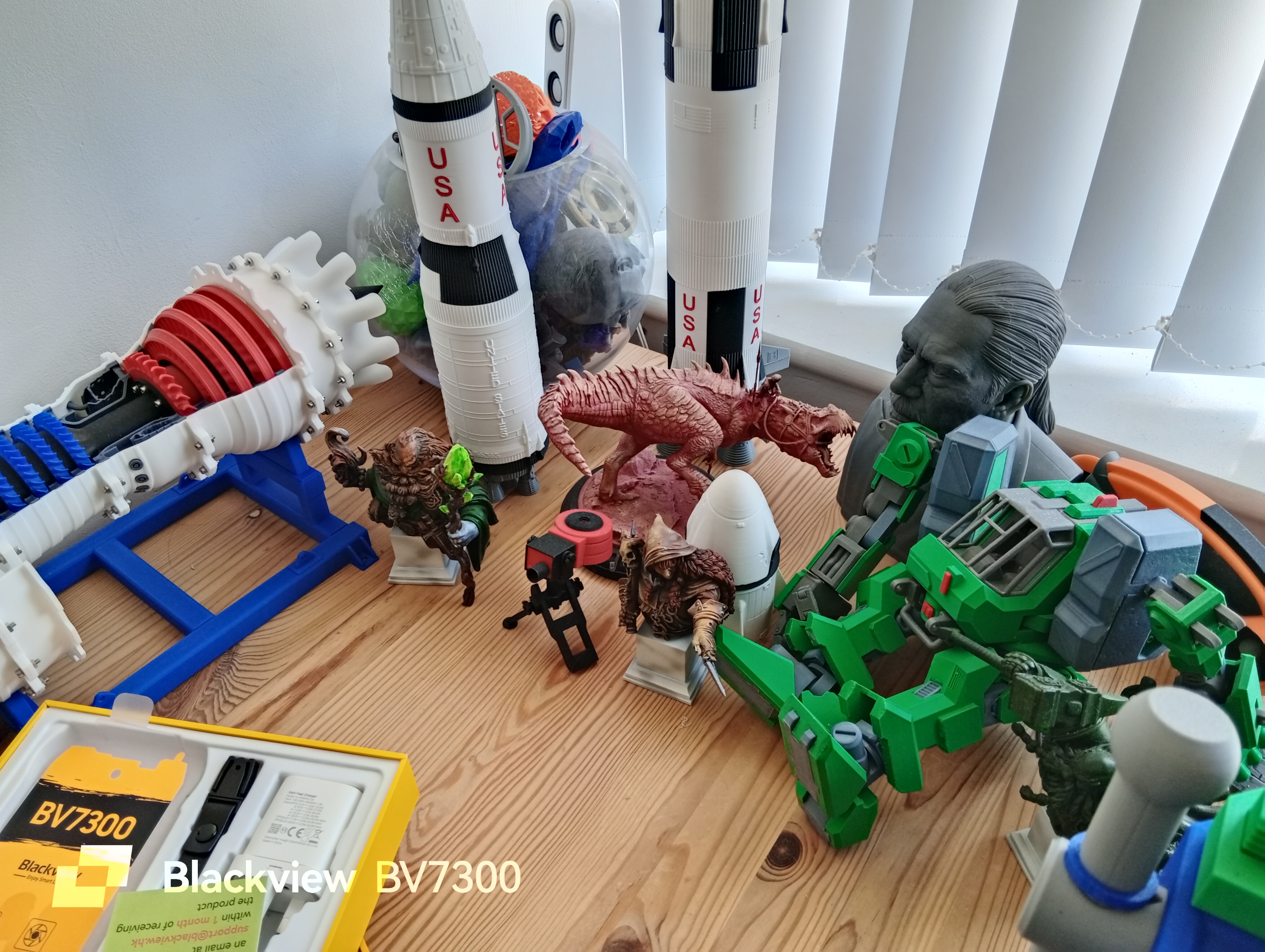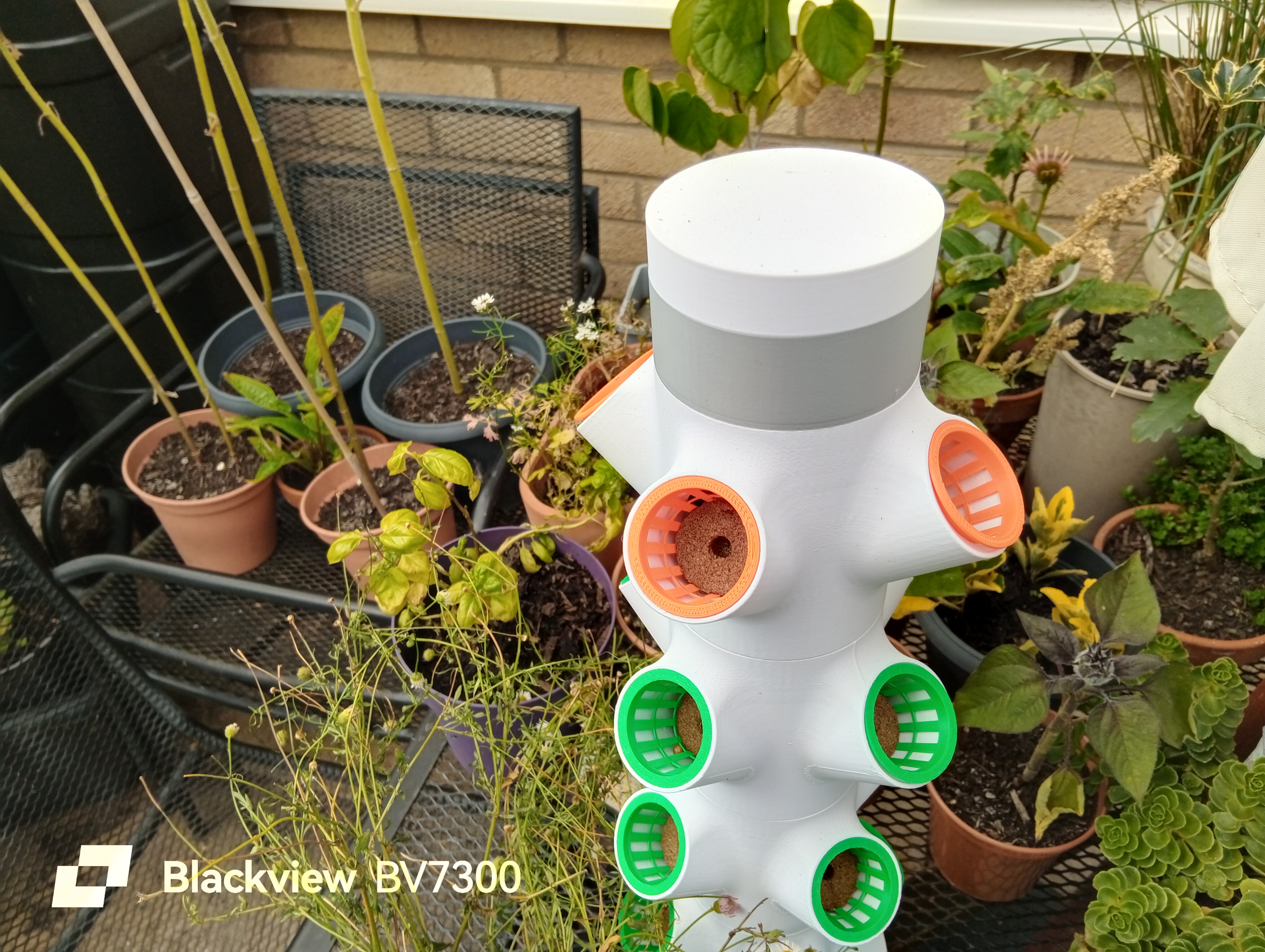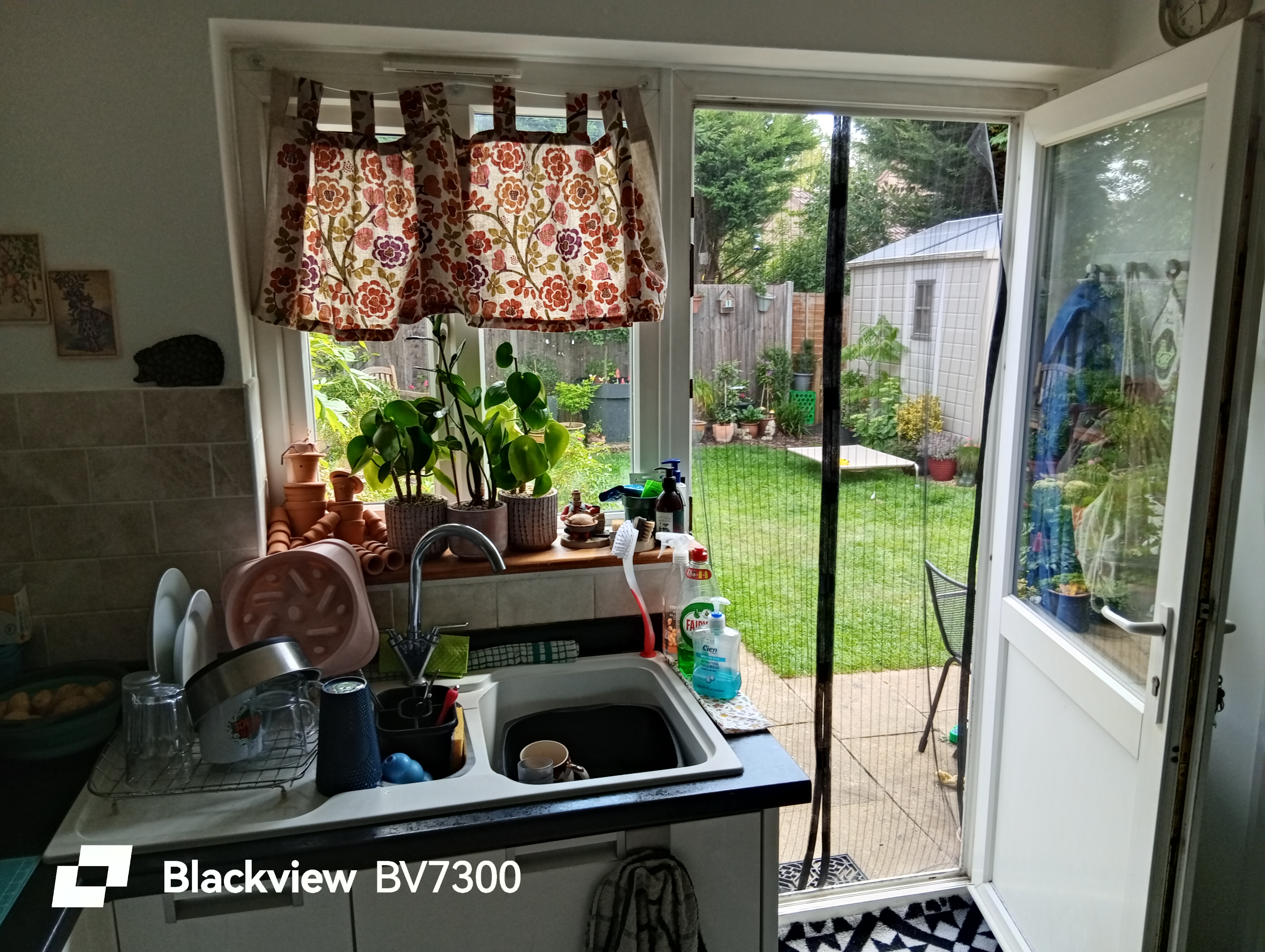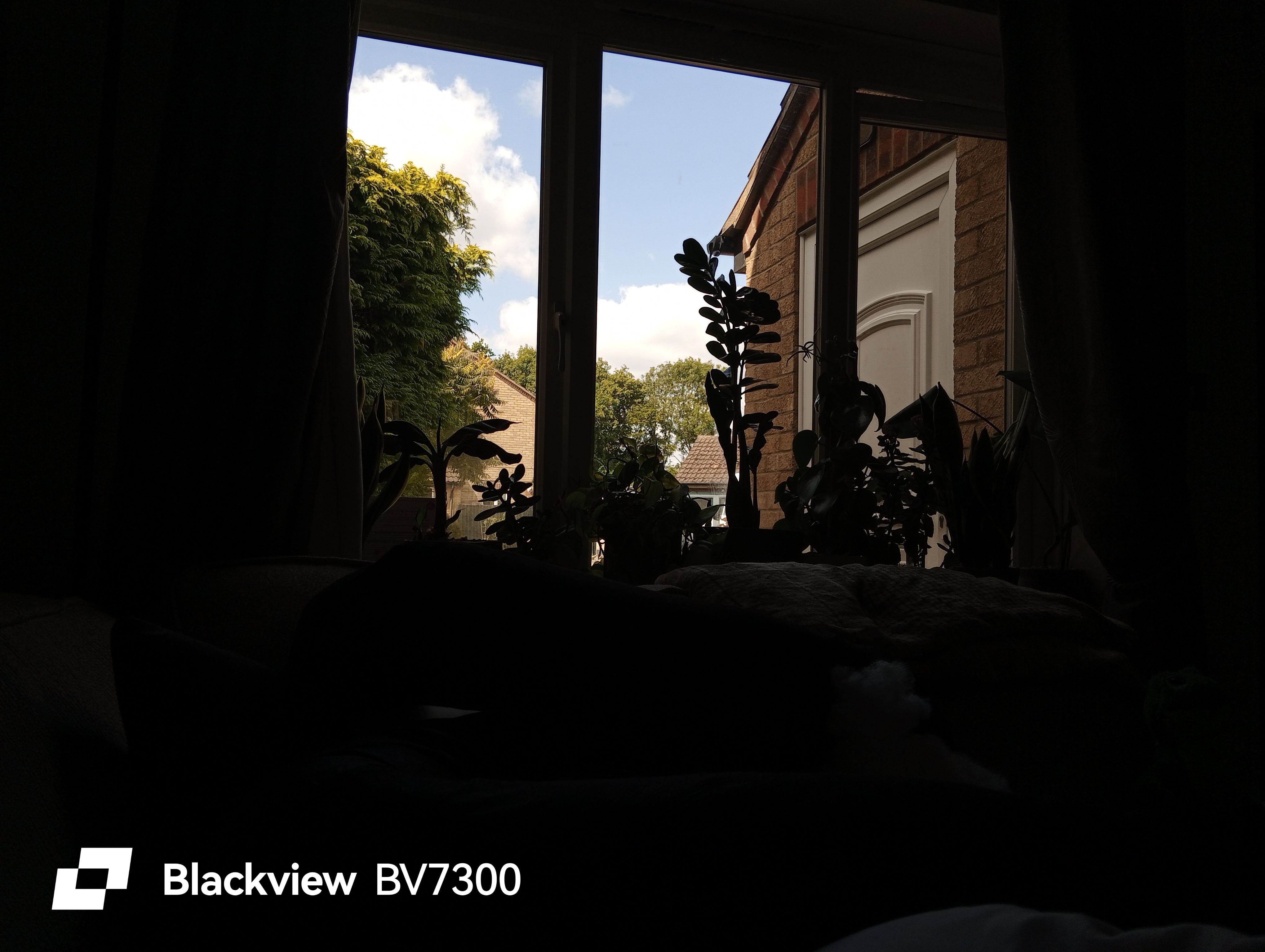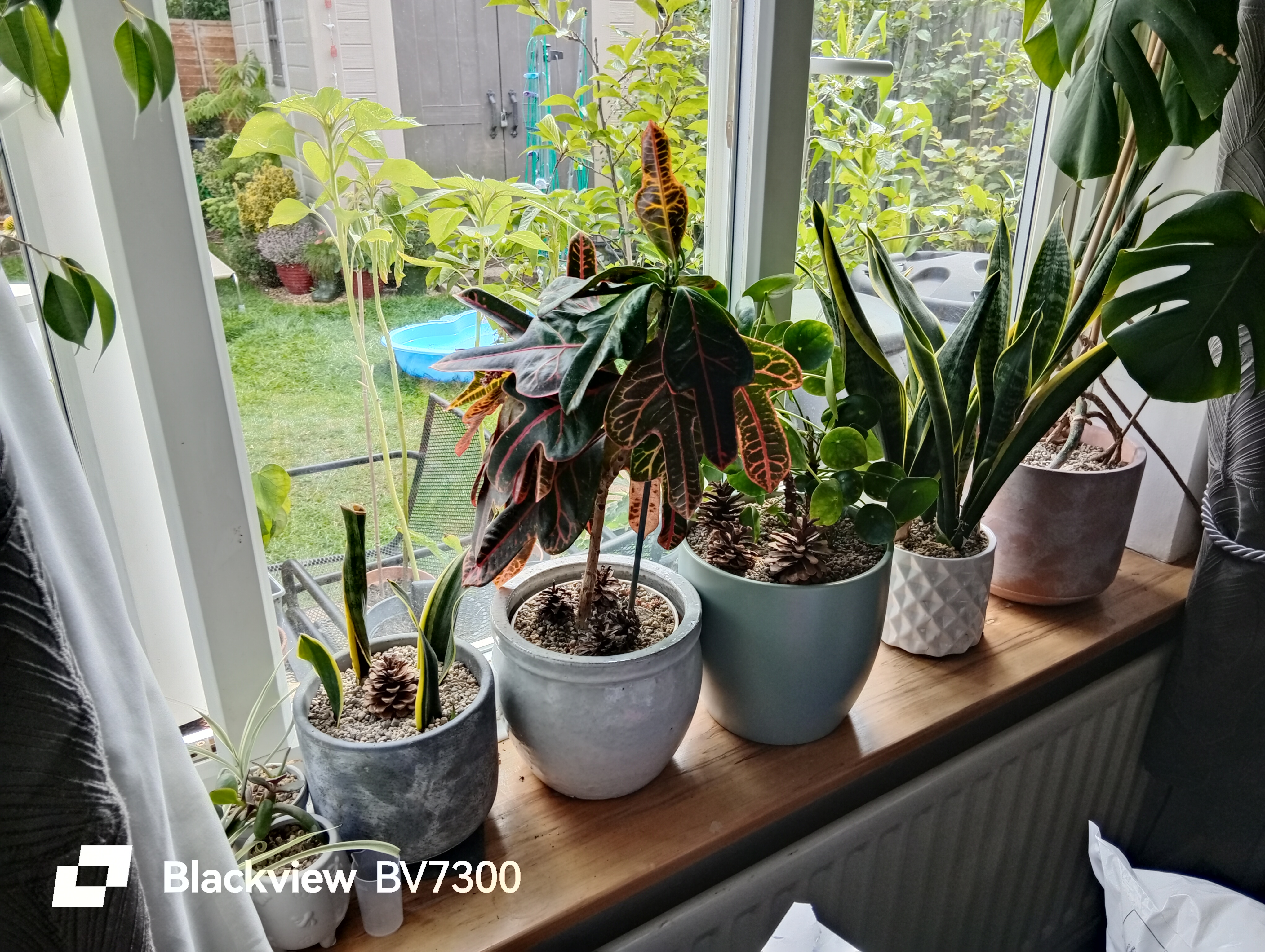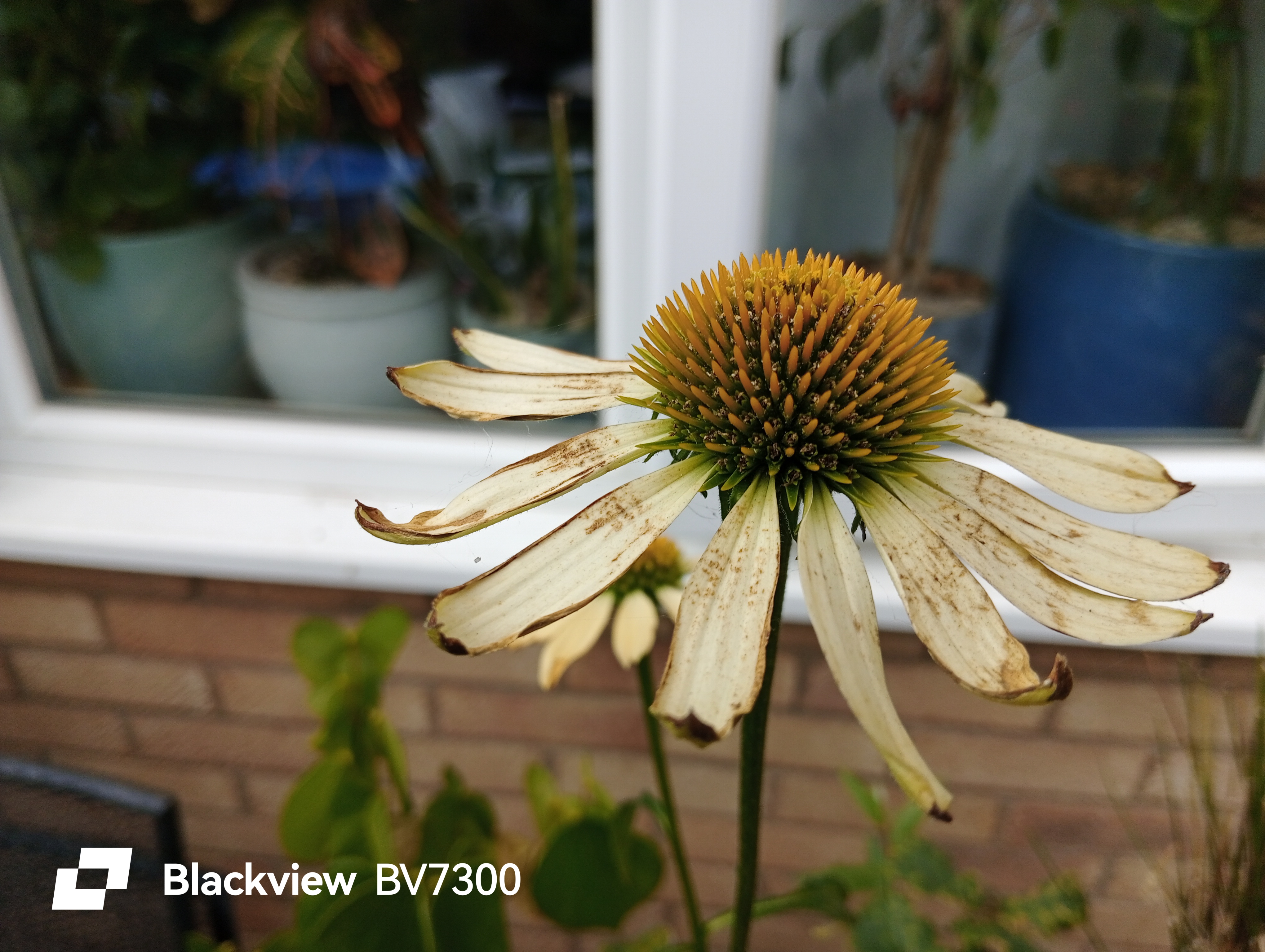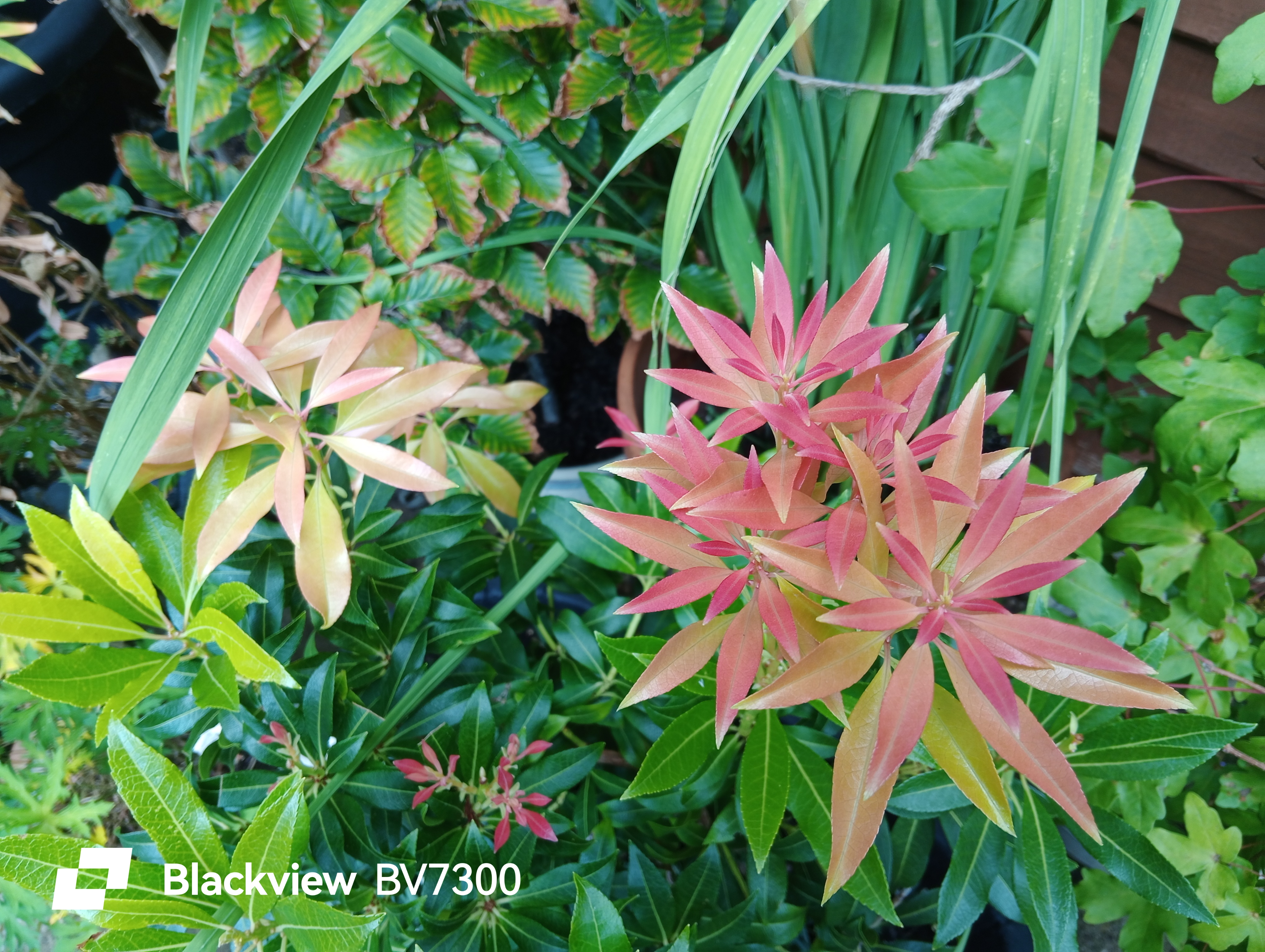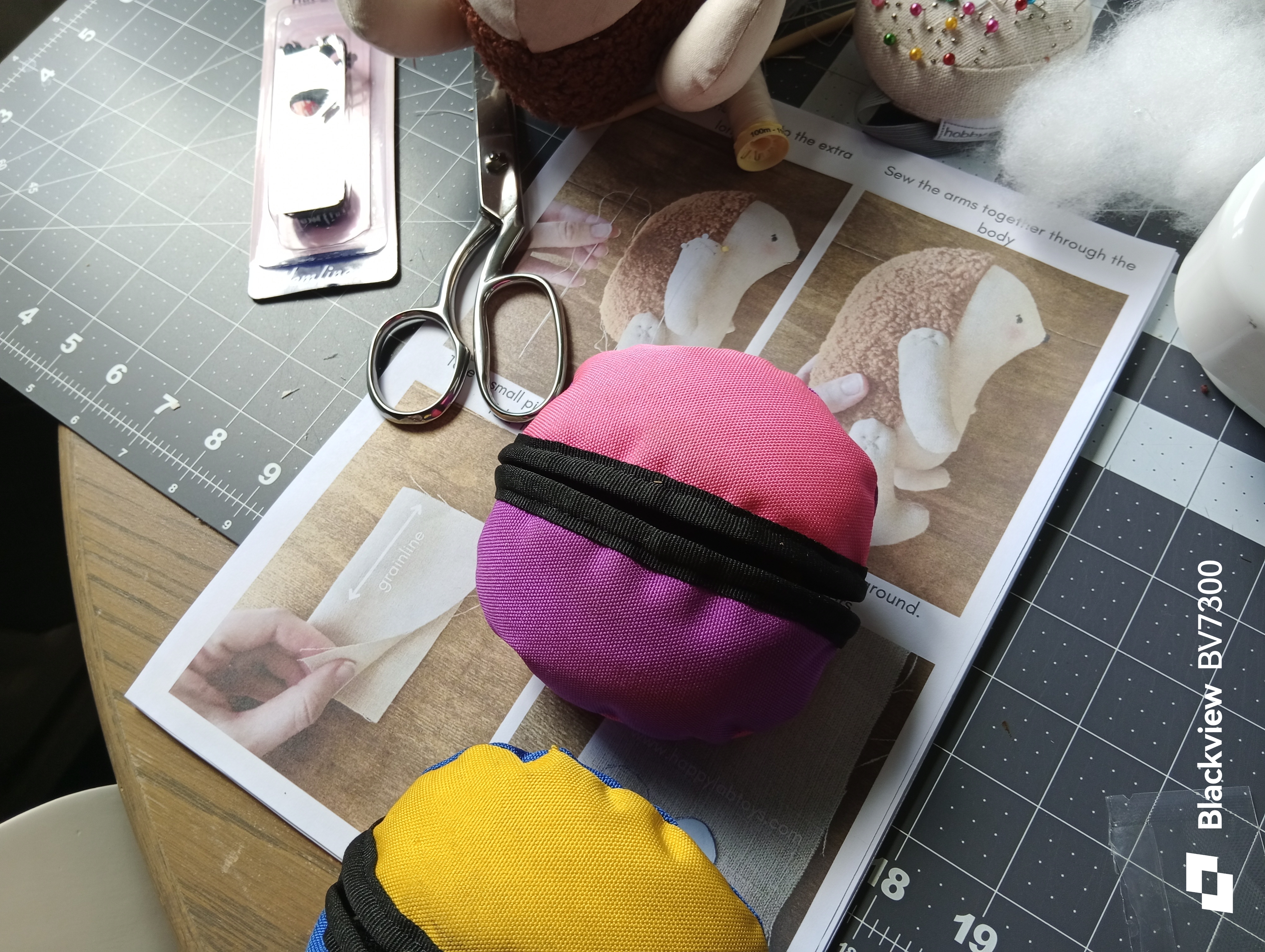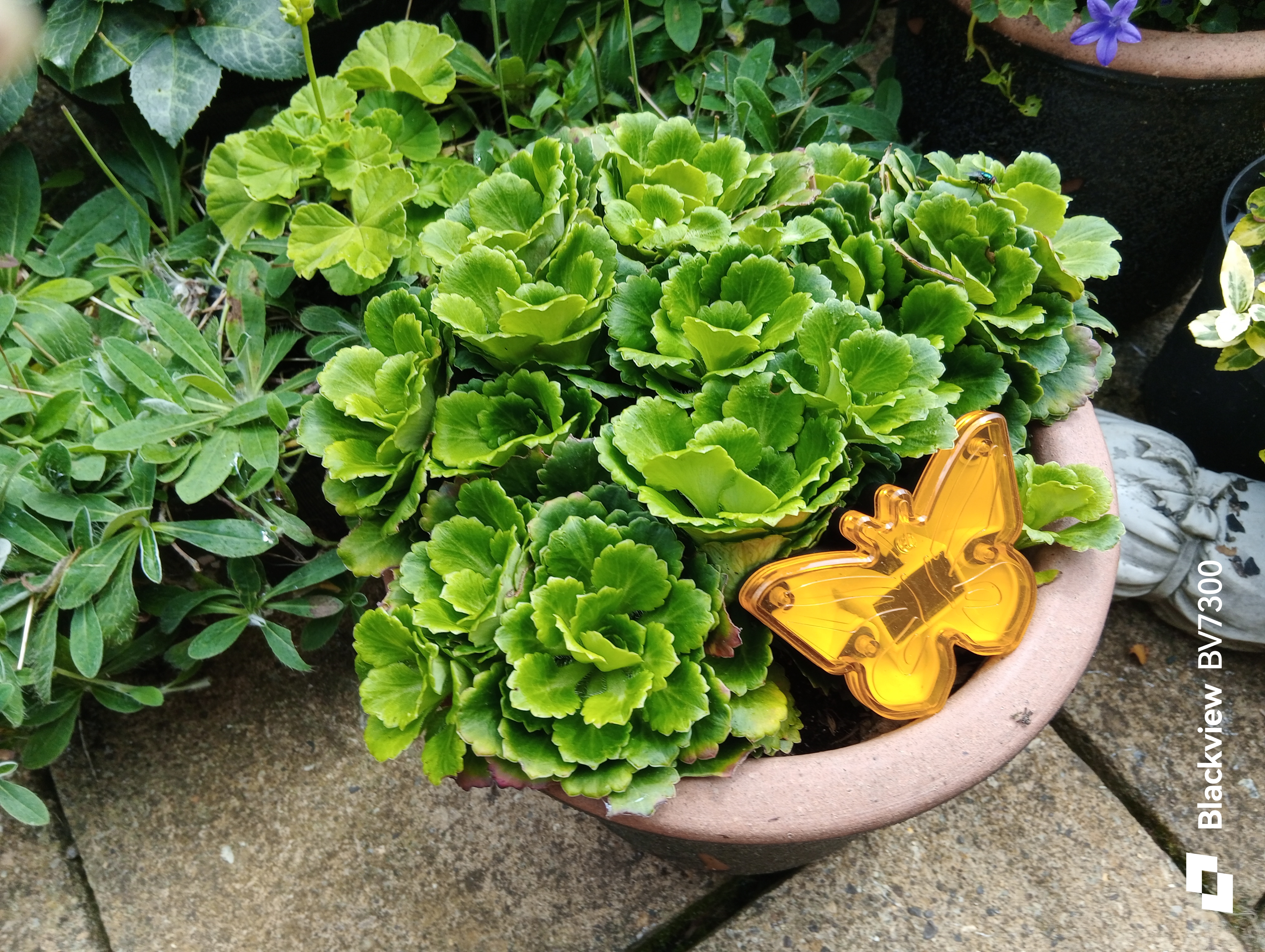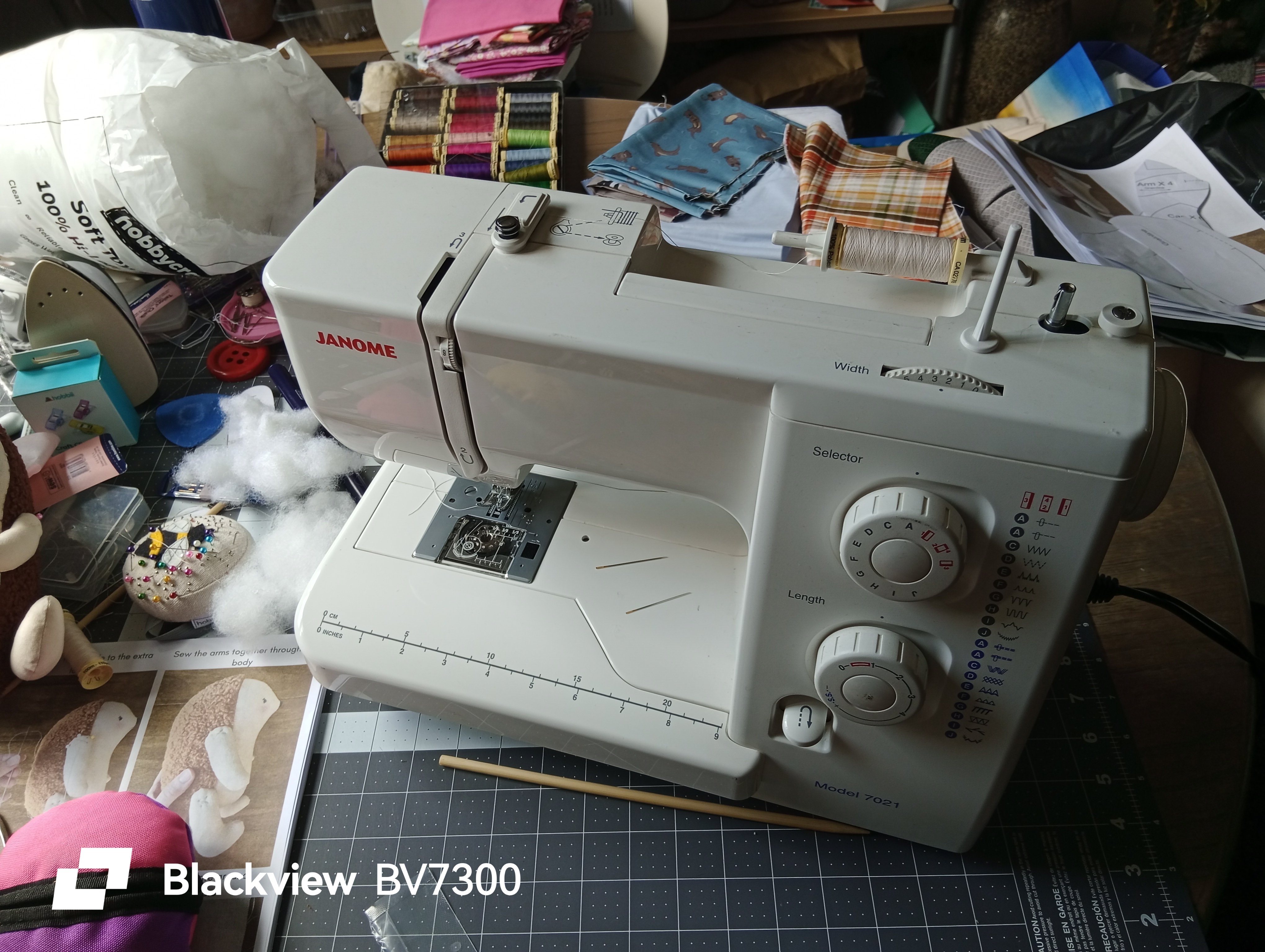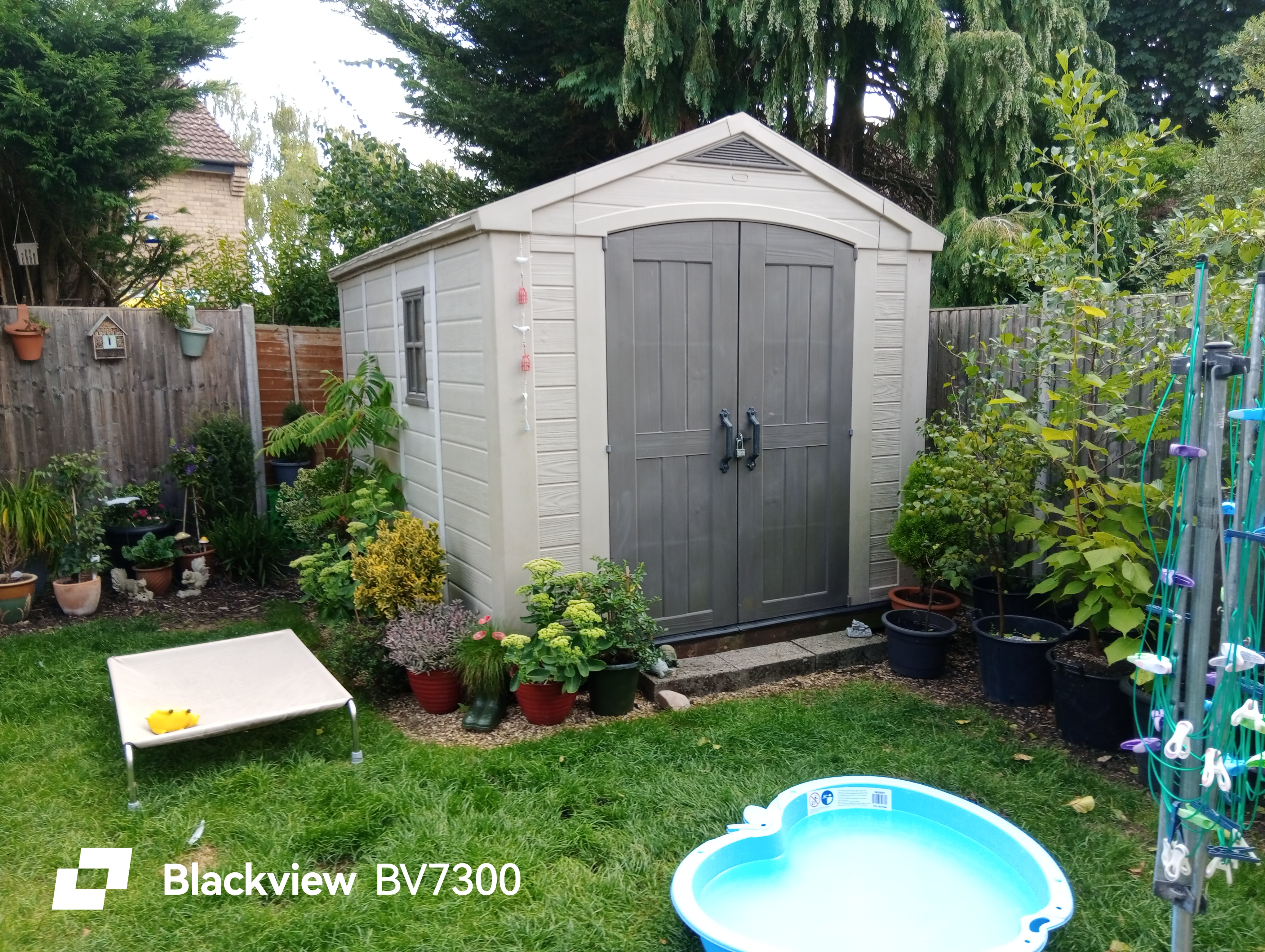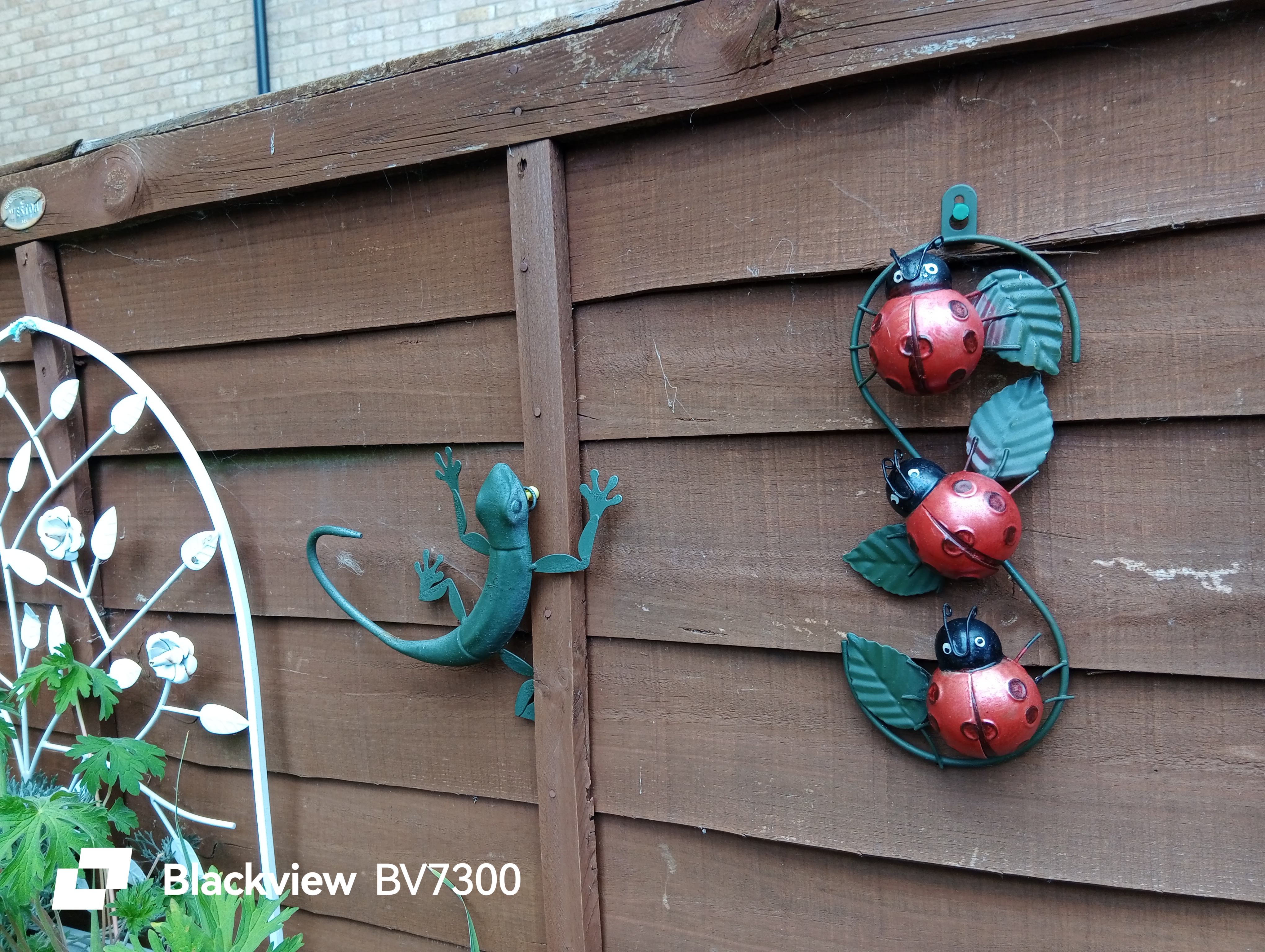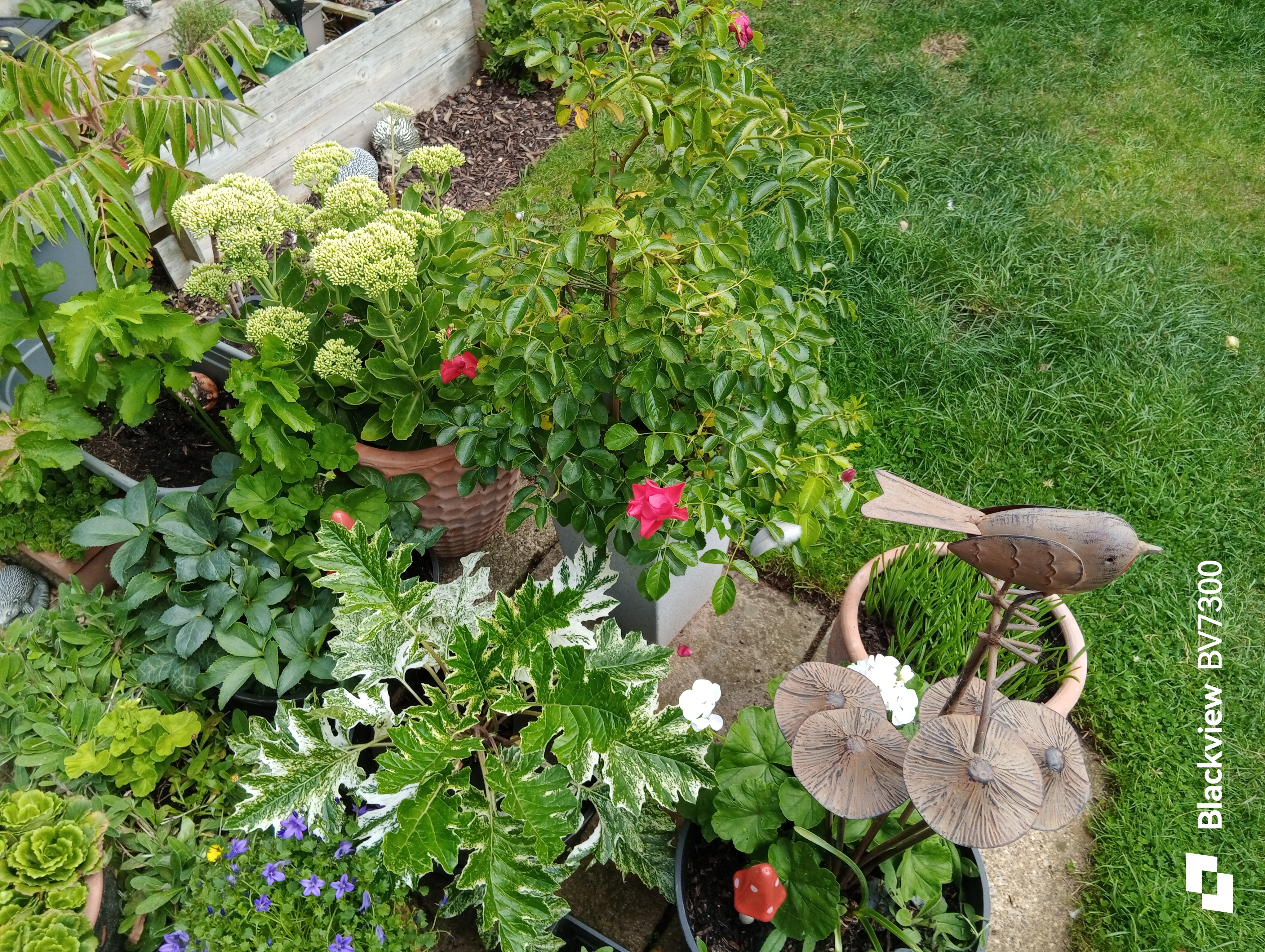Why you can trust TechRadar
We spend hours testing every product or service we review, so you can be sure you’re buying the best. Find out more about how we test.
Blackview BV7300: 30-second review
Blackview is a thriving technology brand that initially specialised in rugged outdoor phones designed to support rugged lifestyles and survive demanding and challenging environments. Over the years, Blackview has expanded its product range to include mainstream smartphones, smartwatches, earphones, tablets, and laptops.
The Blackview BV7300 is a rugged smartphone designed for outdoor enthusiasts and professionals who need a durable and reliable device. It features a reinforced frame and textured back for a secure grip, making it both tough and stylish. The BV7300 is equipped with dual camping lights and a 20MP night vision camera, ensuring safety and visibility in low-light conditions. Its super-large 15000mAh battery supports 45W fast charging, providing long-lasting power for extended use.
The device runs on Android 14 with DokeOS 4.0, offering a smooth and personalised user experience. With up to 18GB RAM and 256GB ROM, the BV7300 delivers powerful performance for various tasks. Additionally, it boasts IP68 and IP69K ratings for water and dust resistance, as well as MIL-STD-810H certification for durability in extreme environments.
The BV7300’s weaknesses include an odd low-resolution screen and a limitation to 4G comms, not 5G. And at 528g, this is a bulky phone to use for everyday use.
It is unlikely to be our top choice for rugged smartphones, but it offers excellent value for those who occasionally venture into challenging environments.
Blackview BV7300: price and availability
- How much does it cost? $280/£166
- When is it out? Available globally
- Where can you get it? Direct from the maker or via an online retailer
Available directly from the maker’s own shop, the asking price is £166 in the UK and $279.99 for US customers, making it a substantially better deal in those countries that don’t apply tariffs to Chinese goods.
If bought via Amazon.com and with a coupon applied, it can be had for only $219.99, but the standard price is $249.99. UK customers can get it via Amazon for £170.
For those willing to wait for AliExpress to deliver, it can be found for less than £150 or $195.
Typically, I’d mention another phone that uses the same platform as the BV7300, but alas, it’s almost unique to this device. The only other Android device using the G81 SoC is the Oukitel RT3 Pro tablet.
Based on the specification, this is a decent phone for what is the bargain basement end of recent rugged phones
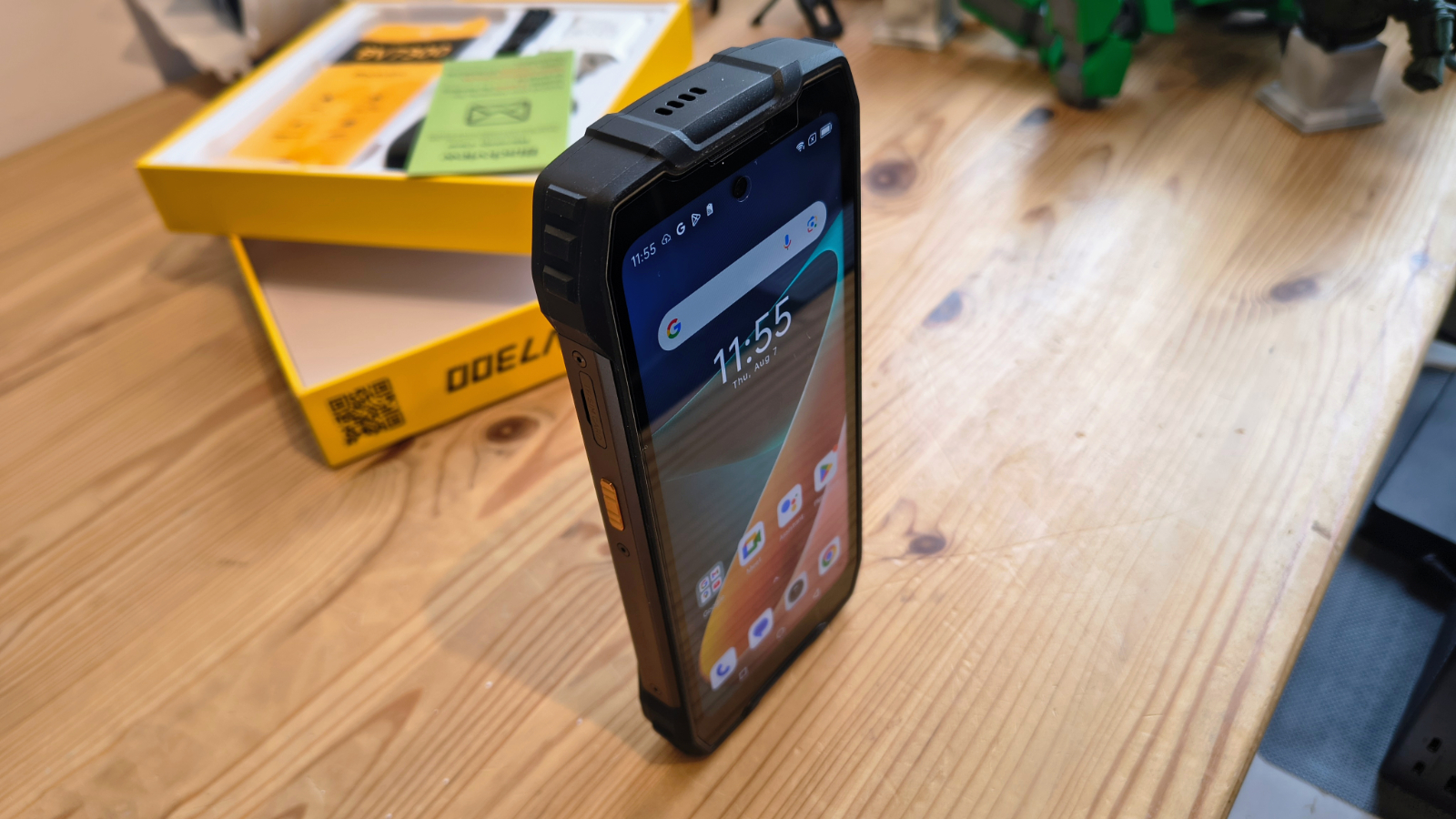
Blackview BV7300: Specs
Item | Spec |
|---|---|
Model | BV7300 |
Processor (SoC) | MediaTek Helio G81 (12nm), Octa-core (2×2.0GHz Cortex-A75 + 6×1.8GHz Cortex-A55) |
GPU | Mali-G52 MC2 |
RAM | 6GB (expandable up to 18GB with virtual RAM) |
Storage | 256GB eMMC 5.1 |
Expandable Storage | microSDXC (up to 2TB, shared SIM slot) |
Display | 6.67″ IPS LCD, 720×1604 pixels, 90Hz refresh rate, 700 nits brightness |
Rear Cameras | 50MP (Samsung S5KJN1, f/1.8, PDAF) + 20MP (Sony IMX376 night vision, f/2.0) |
Front Camera | 32MP Galaxycore GC32E1 |
Video Recording | 1080p @ 30fps (front and rear) |
Operating System | Android 14 with DokeOS 4.0 |
Connectivity | Dual SIM (Nano), Wi-Fi 802.11 a/b/g/n/ac, Bluetooth 5.3, NFC, FM radio |
Wireless Networking | Dual Bands: 2.4G/5.0GHz,802.11 ab/g’n/ac, BT 5.3 |
2G Bands | 850/900/1800900(B2/B3/B5/88) |
3G Bands | WCDMA: B1/B2/B4/B5/B8 |
4G Bands LTE-FDD | 81/B2/B3/B4/B5/B7/B8/B12/B13/B17/B19/B20B26/B28A/B28B/B66 |
4G Bands LTE-TTD | B40/B41/B38 |
Ports | USB Type-C (no 3.5mm headphone jack) |
Sensors | Accelerometer, gyro, proximity, compass |
Flashlight | 800-lumen dedicated flood flashlight |
Battery | 15,000mAh Li-Po, 45W wired charging, 7W reverse wired charging |
Durability | IP68/IP69K water and dust resistance, MIL-STD-810H compliant |
Build Materials | Polycarbonate, TPU, Aluminium alloy |
Dimensions | 186.2 × 85 × 24 mm |
Weight | 528g |
Blackview BV7300: design
- Built to last
- Large camping light
- No headphone jack
Blackview devices often feature sharp lines, reinforced corners, and textured surfaces that evoke a tool-like toughness. They look like they belong in a toolbox as much as a backpack. And, the BV7300 is no exception.
It has metal sides and buttons that, together with the rubberised bumpers, reinforce the rugged identity. These style aspects aren’t just decorative; they are a signal of durability, and this phone was made to operate in harsh environments.
The button layout is by-the-numbers, with the volume rockers and fingerprint-reading power button on the right, and the user-definable function button on the left.
In addition, the left side is also where the SIM tray resides, and it’s one where you can use two Nano SIMs or one and a MicroSD card for additional storage.
The rear mounts the two cameras near the top and relatively central, making them easy to aim, but the majority of the back is taken up with a substantial camping LED.
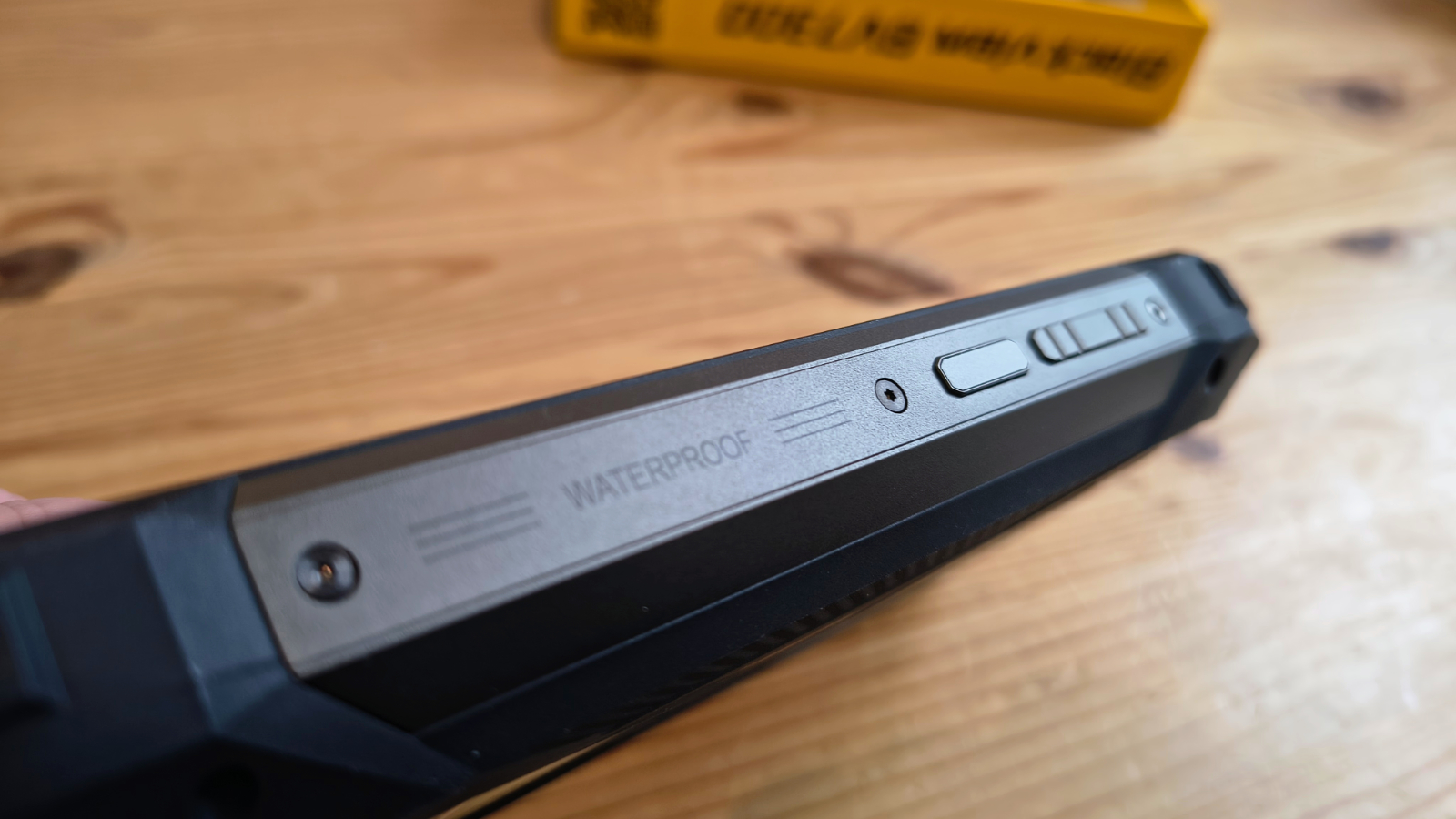
To diverge for a moment, many phones these days come with a substantial metal label stuck to them. This details the model, spec, IMEI number, serial number and various standards that the maker wishes to acknowledge. Do you leave these on, or do you peel them off?
Until now, I’ve always left them on, as the information might be necessary at some point and locating it could be crucial.
Why am I mentioning this? On the BV7300, the label is slapped over half of the camping LED, and therefore, it needs to be removed if you want to use that feature. I chose to leave it in place for my photographs, but if I were to use this device in anger, it would need to be removed.
The use of the back with the dual-element LED lamp also negates the possibility of wireless charging, but with a battery this big, that probably wasn’t a possibility.
What this design lacks is a headphone jack, although you could use an adapter with the USB-C port if you own one.
As is often the case with Blackview hardware, the BV7300 sells its robust credentials confidently and doesn’t stray away from the feature set that most of its customers expect.
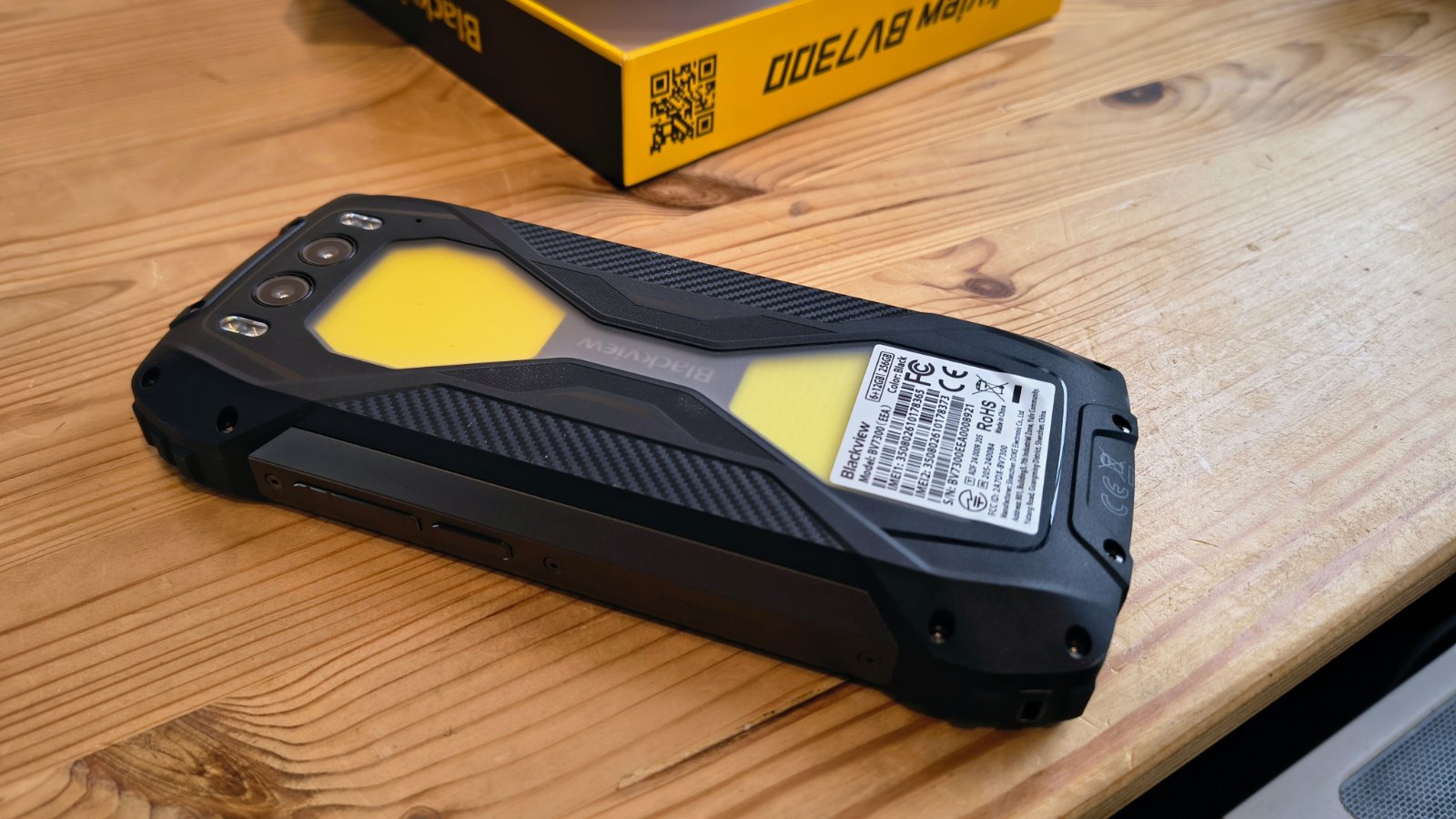
Design score: 4/5
Blackview BV7300: hardware
- MediaTek Dimensity 7300
- Odd resolution display
- 15000 mAh battery
The MediaTek Helio G81 is a mid-range SoC introduced in August 2024, designed primarily for budget-friendly Android smartphones with a focus on gaming and multimedia performance.
It has an older brother, the G80, that has basic AI features, and this chip added Enhanced AI (MediaTek NeuroPilot, Android NNAPI support), allegedly. It also sports EIS (electronic image stabilisation), along with support for a 120Hz display. The makers, Mediatek, have also added the Helio G85, which is remarkably similar to the G81 used in this phone.
All the G8X series use dual A75 performance cores combined with six A55 efficiency cores to deliver both power and long battery life. They also all use the Mali-G52 MP2 GPU, which isn’t especially powerful, but is good enough for smooth video playback.
It’s a solid choice for rugged phones and budget gaming handsets, offering a good balance of efficiency and features without pushing into premium territory.
One potential improvement could be that this chip uses a 12nm FinFET (TSMC), whereas the latest Dimensity chips use 6nm and even 4nm. That limits how far its efficiency can go, and it also has a capped bandwidth by using LPDDR4x 1800Mhz memory.
But this chip does support a screen with a 2520 x 1080 resolution and a 120Hz refresh rate, but unfortunately, that wasn’t what Blackview gave the BV7300.
The 6.67-inch IPS LCD has the curious resolution of 720 x 1604 pixels, a 90Hz refresh rate and a 700 nits brightness. That means it can’t display 1080p video at its full quality, and that includes the video captured by the primary camera.
If neither the screen nor the SoC are the star of this show, what is? Possibly the battery, which has a capacity of 15000mAh, is mostly responsible for this phone weighing more than 500g.
If you aren’t put off by such a bulky device, that’s plenty of battery capacity, and it can be shared with other devices using reverse charging.
When we get to the benchmarking, it will become evident that those comments are foreshadowing, in many respects.
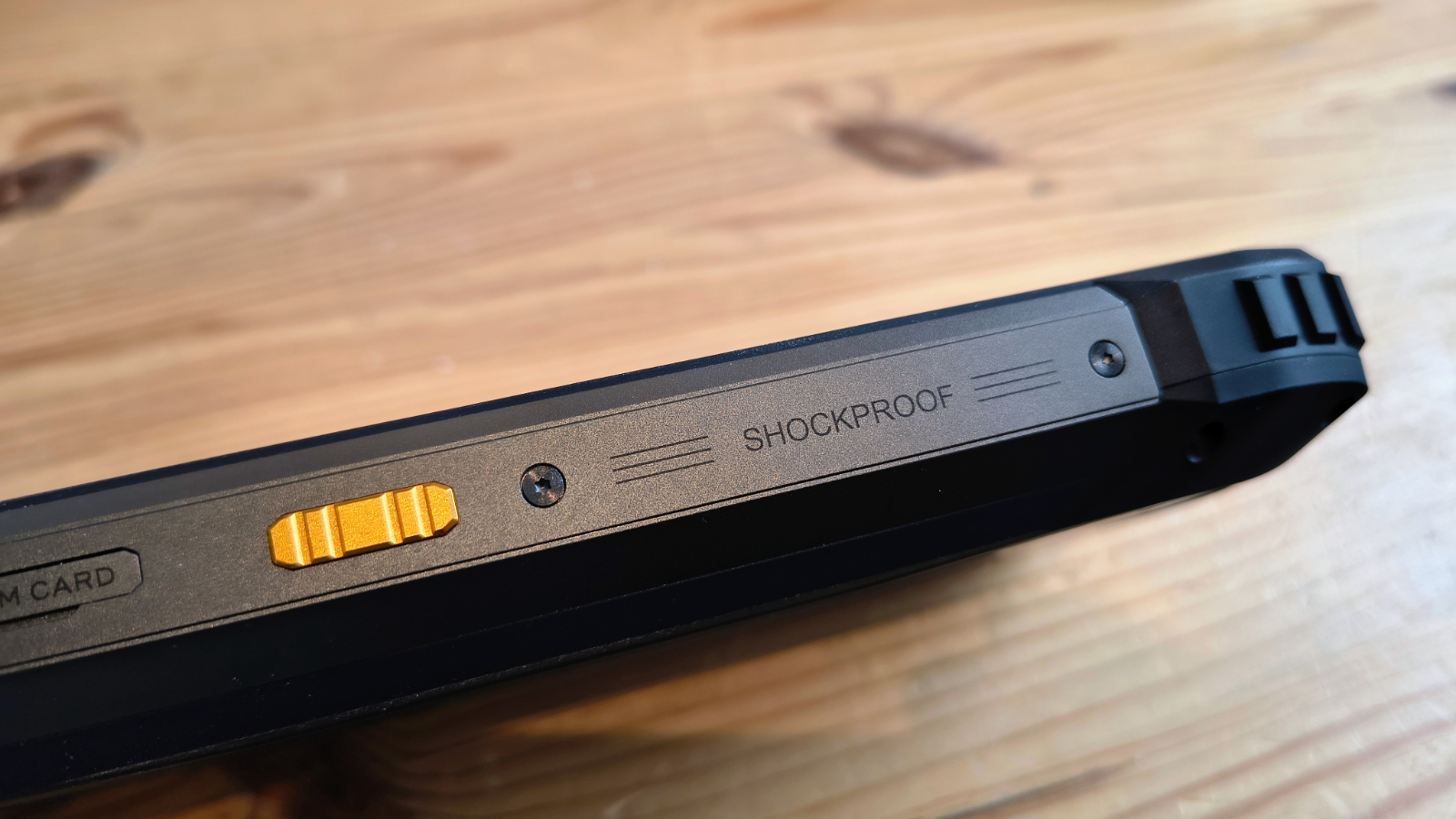
Blackview BV7300: cameras
- 50MP and 20MP sensors on the rear
- 32MP on the front
- Three cameras in total

The Blackview BV7300 has three cameras:
Rear camera: 50MP Samsung JN1 primary, 20MP Sony IMX376 Night Vision
Front camera: 32MP Galaxycore GC32E1-WA1XA
I wasn’t expecting much considering the cost of this camera and its inevitably tight production budget. But the 50MP Samsung JN1 primary is a workmanlike sensor that, in good lighting conditions, can deliver some decent quality images.
I’d recommend that, unlike me, you disable the AI and HDR functionality, as it tends to oversaturate the colours to the point of making some captures pop-art.
The JN1 is a decent, if now slightly old, Samsung sensor that uses pixel-binning to create generally good 13MP captures from its 50MP source data.
Its limitation is that it isn’t great in low-light conditions, resulting in blurry and grainy results. Blackview’s answer to that was to make the second sensor the 20MP Sony IMX376, which is a specialist Night Vision camera.
What’s mildly confusing is that within the Android camera app, there are ‘Night’ and ‘Night Vision’ modes, with the first being an AI-enhanced EIS mode that uses the Samsung JN1 but longer exposure times.
Electronic Image Stabilisation (EIS) is a technology used in the context of the MediaTek Helio G81 System on Chip (SoC) to reduce blurriness and shakiness in videos and images. EIS works by using software algorithms to compensate for small movements and vibrations during video recording or photography. This is particularly useful for handheld shooting, where even slight hand movements can cause noticeable shake in the footage.
While EIS helps, it’s not the same as optical stabilisation, and the results are a bit mixed. If you truly want to take images in low light, the MX376 is a much better choice as it uses IR flash to bathe even the darkest locations in light that the sensor can see and generate an image from. It’s only B&W, and the images are in 20.2MP resolution.
Using this mode, you should be able to capture nocturnal creatures if you turn the screen brightness down and stay quiet enough that your presence isn’t an issue.
As a camera system, the BV7300 is better than I expected, but it’s also worth noting that it is a budget device. So you get a Pro mode, panoramas, time-lapse, document shooting and even AR stickers. But equally, the best video resolution is ‘high’, which translates into 1080p when you’ve recorded something.
When you consider that the Samsung ISOCELL JN1 is capable of 4K at 30fps, that’s an intentional omission.
It’s normal at this point in my phone reviews to moan that the makers only support Widevine L3 video encryption, reducing the quality of streaming to only 480P from most of the big streaming brands.
However, since the best resolution this display can support is only 720p, it’s probably not an issue in the greater scheme of things.
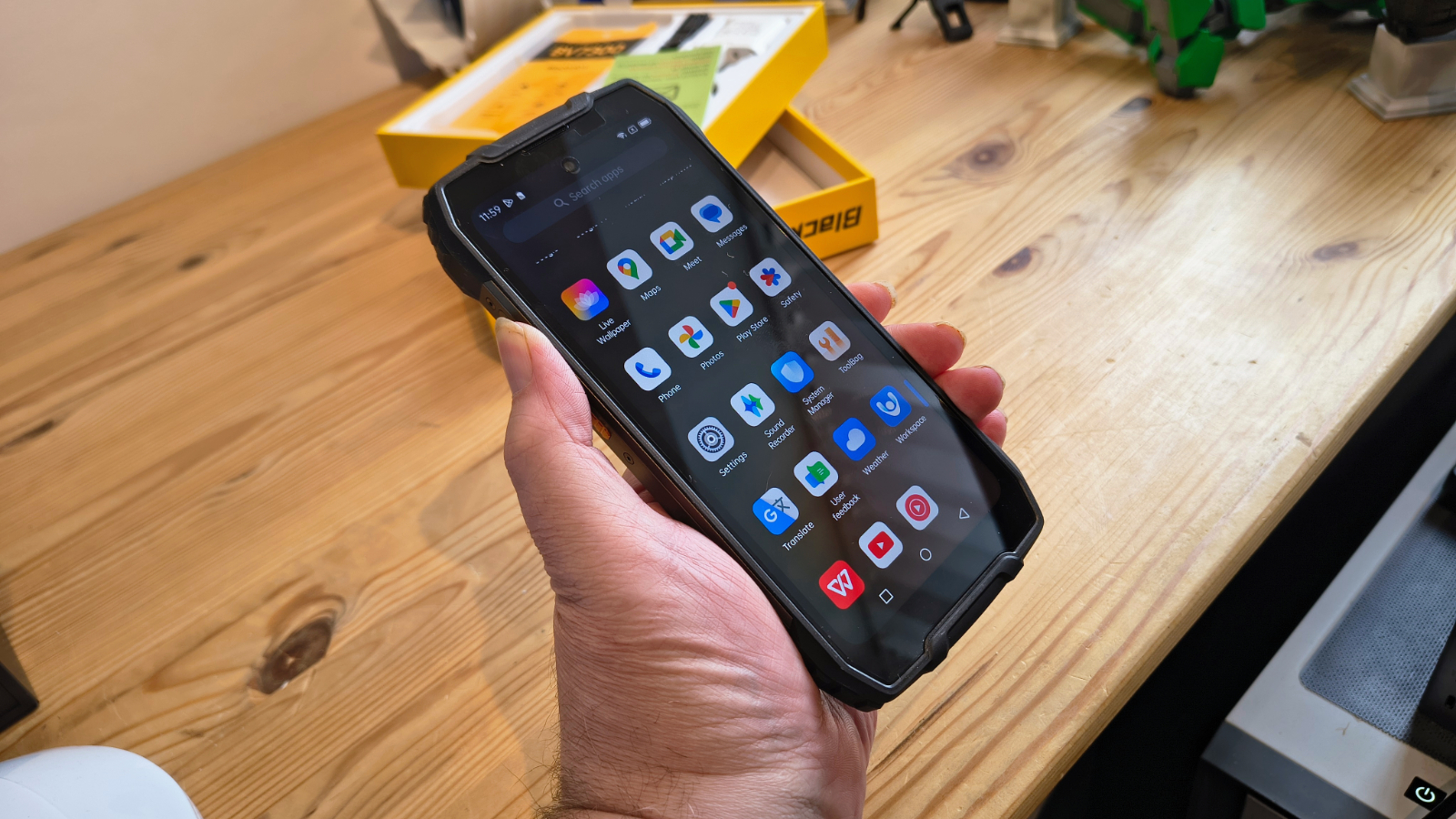
Blackview BV7300 Camera samples
Blackview BV7300: performance
- Not 3D game-friendly GPU
- Decent battery performance
Phone | Header Cell – Column 1 | Blackview BV7300 | Doogee Fire 6 Power |
|---|---|---|---|
SoC | Row 0 – Cell 1 | Mediaktek Helio G81 | Unisoc T606 |
GPU | Row 1 – Cell 1 | Mali-G52 MP2 | Mali G57 MP1 |
Mem | Row 2 – Cell 1 | N/A | N/A |
NPU | Row 3 – Cell 1 | 6GB/256GB | 8GB/256GB |
Weight | Row 4 – Cell 1 | 528g | 430g |
Battery | Row 5 – Cell 1 | 15000 | 15500 |
Geekbench | Single | 446 | 391 |
| Row 7 – Cell 0 | Multi | 1469 | 1368 |
| Row 8 – Cell 0 | OpenCL | 218 | 460 |
| Row 9 – Cell 0 | Vulkan | 361 | 461 |
GFX | Aztec Open Normal | 5.5 | 5.5 |
| Row 11 – Cell 0 | Aztec Vulkan Norm. | 4.8 | 4.8 |
| Row 12 – Cell 0 | Car Chase | 3.2 | 5.4 |
| Row 13 – Cell 0 | Manhattan 3.1 | 4.9 | 8.8 |
PCMark | 3.0 Score | 7391 | 7790 |
| Row 15 – Cell 0 | Battery | 30h 40m | 31h 18m |
Charge 30 | % | 16 | 13 |
Passmark | Score | 6767 | 6289 |
| Row 18 – Cell 0 | CPU | 3268 | 2947 |
3DMark | Slingshot OGL | 789 | 1479 |
| Row 20 – Cell 0 | Slingshot Ex. OGL | 490 | 985 |
| Row 21 – Cell 0 | Slingshot Ex. Vulkan | 504 | 976 |
| Row 22 – Cell 0 | Wildlife | 226 | 432 |
| Row 23 – Cell 0 | Nomad Lite | N/A | 49 |
It wasn’t easy to find a phone I’d reviewed recently that was comparable to the BV7300, because most that use the Helio G99 or one of the Dimensity series MediaTek SoCs are significantly more powerful than the G81 used here.
Eventually, I chose the Doogee Fire 6 Power, and its underwhelming Unisoc T606 SoC to be something to compare.
Performance-wise, these phones are closely matched, both in CPU and GPU speeds, and neither is a phone you would pick to play 3D games on.
What ultimately divides them is that the BV7300 only comes with 6GB of RAM, and the Nomad Lite test refuses to run with less than 8GB. And, I did try RAM expansion mode, and that 3D Mark test wants real memory, not mapped storage.
Where both phones excel is in respect of battery capacity and running time, with the Fire 6 being a little better because it has 500mAh more battery at its disposal. I worked out the running time per mAh, and the Blackview has a tiny advantage, although it’s also nearly 100g heavier for that win.
Overall, this isn’t a phone that anyone wanting high performance would gravitate towards, but if you want a rugged phone that can take reasonable pictures and last at least four working days without a recharge, then the Blackview BV7300 might be for you.
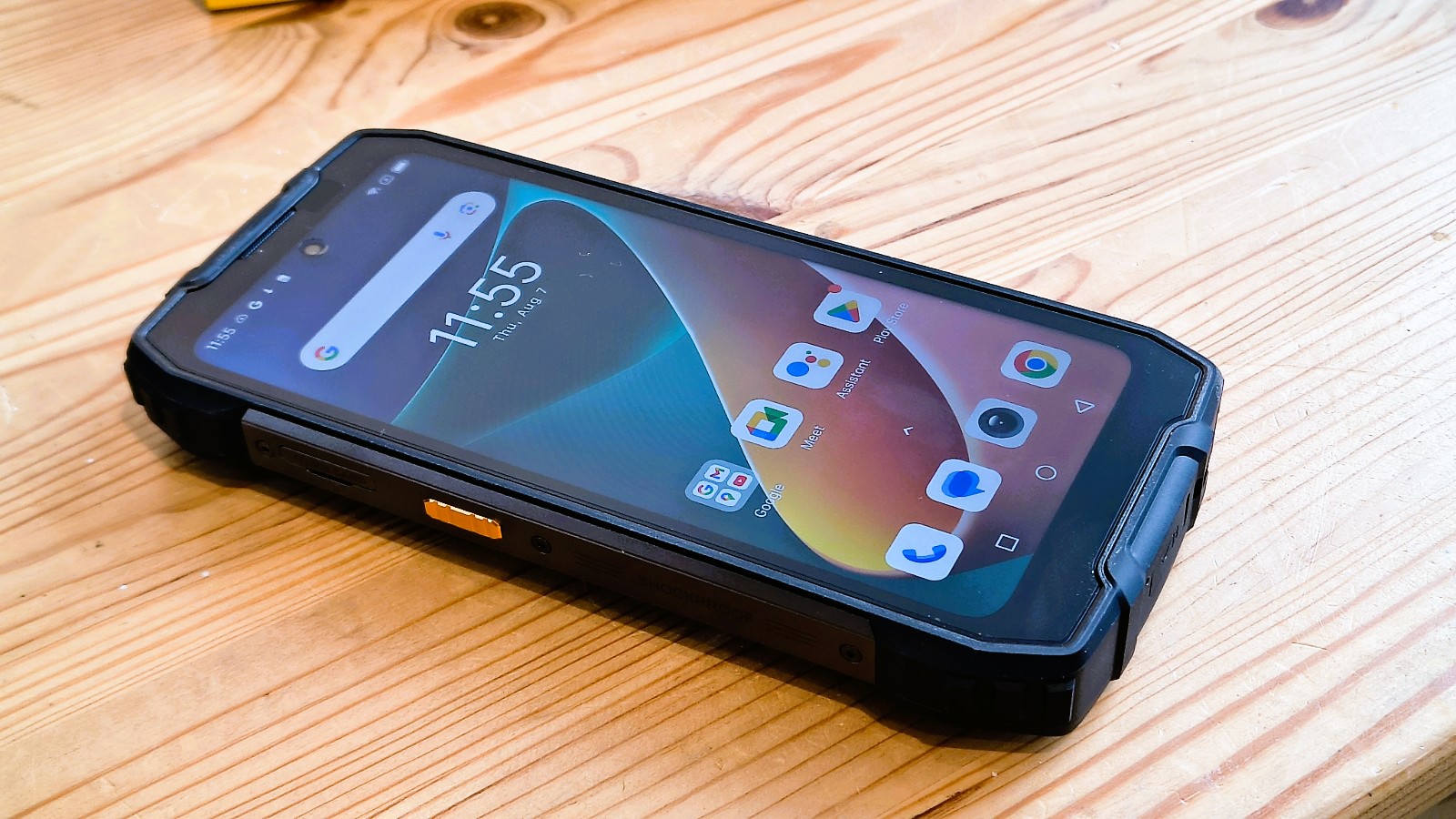
Blackview BV7300: Final verdict
Looking for an affordable phone that can withstand some abuse, whether on holiday, a building site, or in the jungle? Then the Blackview BV7300 might fit the bill.
There isn’t much about this phone that stands out, other than perhaps the battery life and the price, but for some, having a phone that can get wet and be dropped and still work is the critical requirement.
The BV7300 ticks that box, even if it makes it less than lightweight, and in a company scenario, you are unlikely to take flak for going over-budget.
Should I buy a Blackview BV7300?
Attributes | Notes | Rating |
|---|---|---|
Value | Cheap and chunky | 4/5 |
Design | Heavy, but designed to take abuse | 4/5 |
Hardware | MediaTek Helio G81, odd screen, big battery | 4/5 |
Camera | Two rear sensors but only 1080p video | 3.5/5 |
Performance | Budget phone performance but good battery life | 3.5/5 |
Overall | A practical device if you don’t mind the weight | 4/5 |
Buy it if…
Don’t buy it if…
Also Consider
For more durable devices, we’ve reviewed all the best rugged tablets, the best rugged laptops, and the best rugged hard drives

